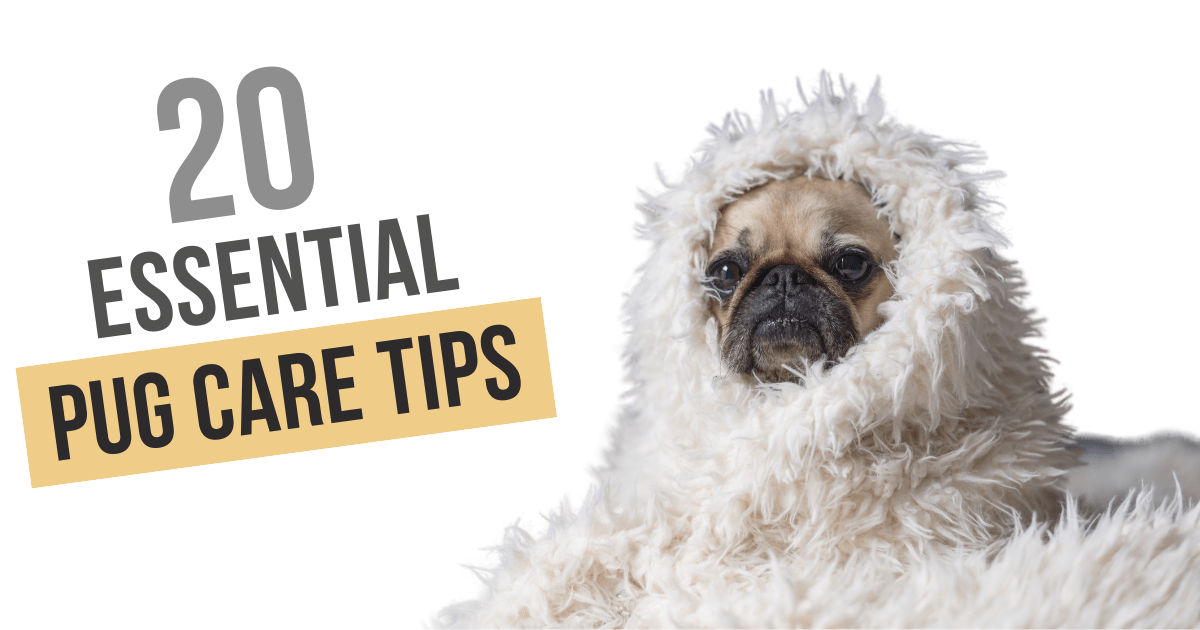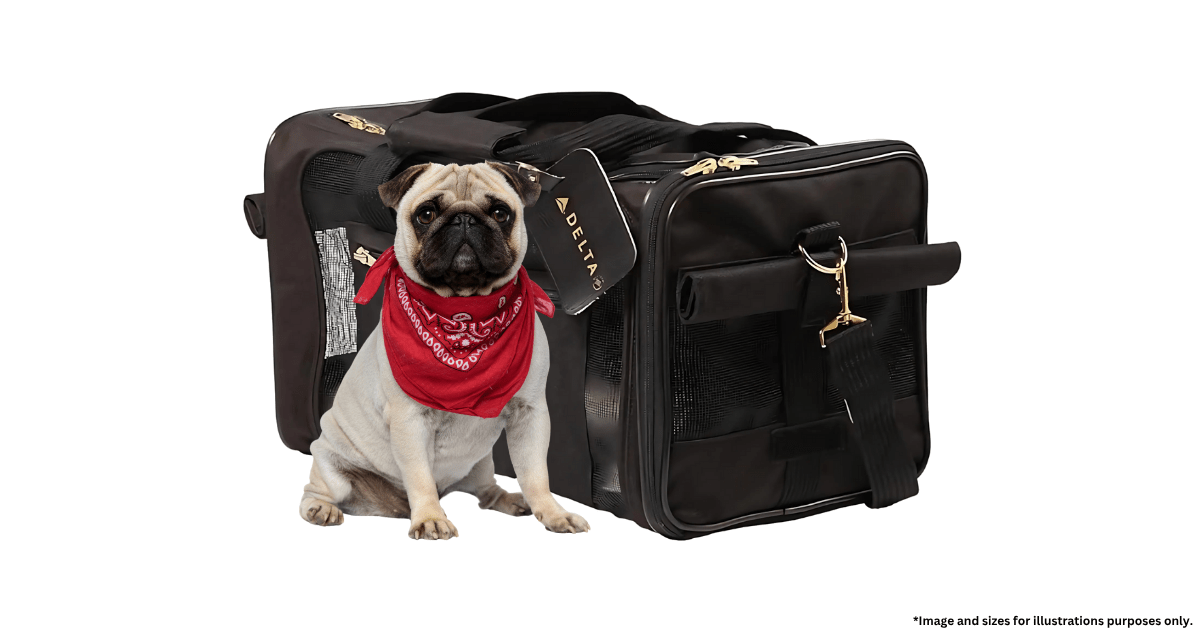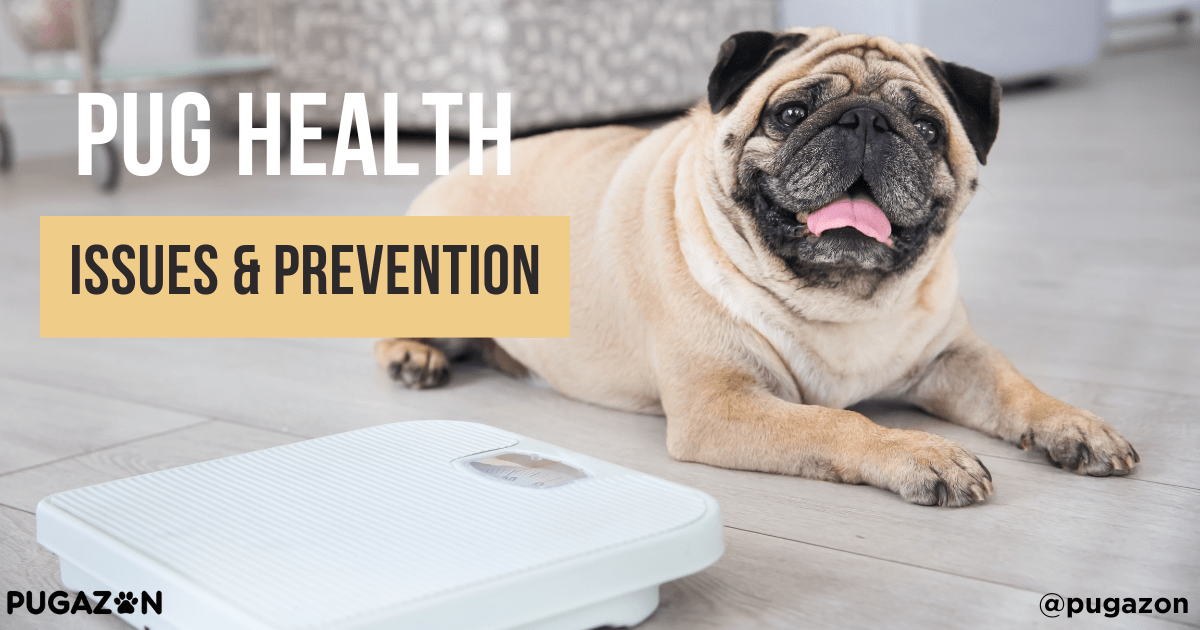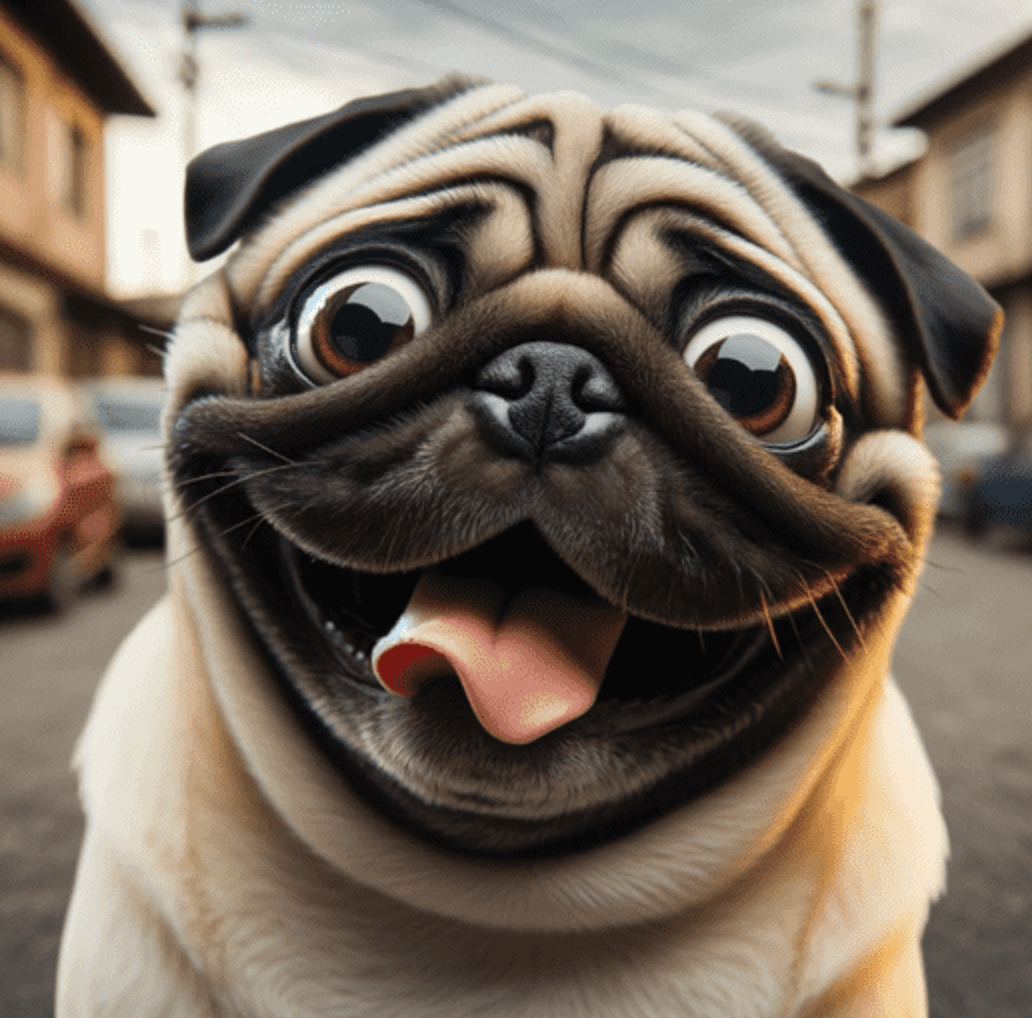Understanding the Unique Aspects of Pug Care
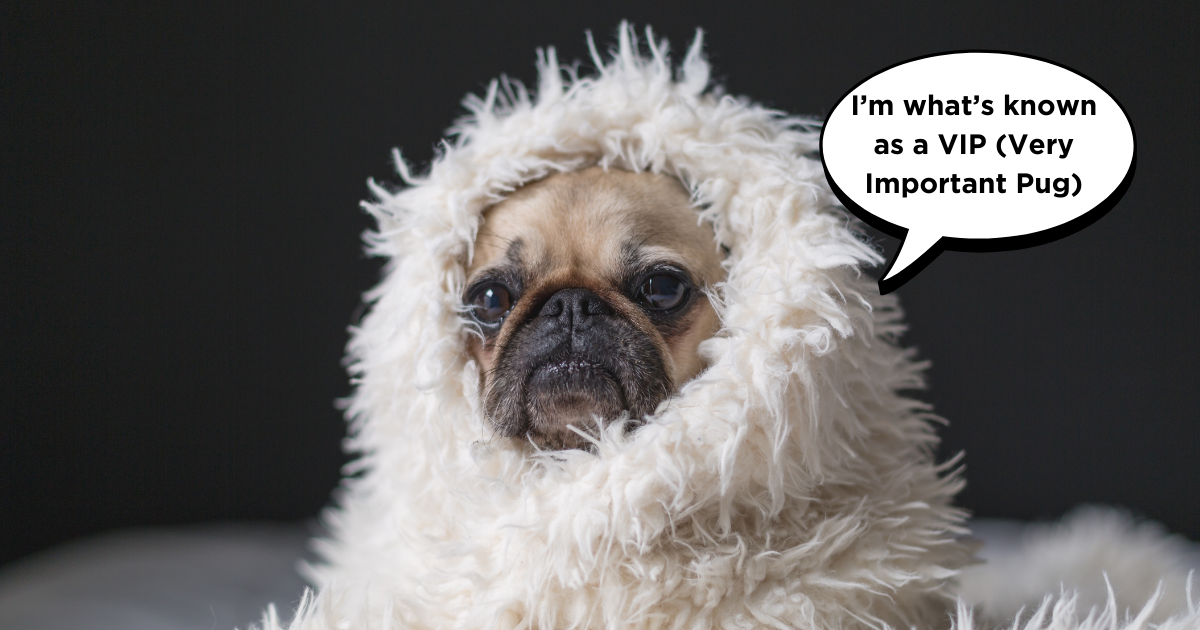
Pug care comes with its own set of challenges and rewards. With their distinctive wrinkled faces, short noses, and compact, sturdy bodies, pugs require unique attention that other breeds may not need. One of the most important things to know about pugs is their susceptibility to certain health issues, such as breathing problems due to their flat faces, skin infections from their folds, and obesity. Because of these quirks, it’s essential to provide them with a care routine tailored to their specific needs.
Why Pugs Require Special Attention
Pugs are affectionate, playful, and often stubborn, making them delightful companions. However, owners must stay vigilant about their care to ensure these lovable dogs remain healthy and happy. From dietary needs to specialized grooming, this guide will offer 20 essential pug care tips that will help you keep your pug in the best possible health.
Whether you’re a new pug owner or a seasoned one, these tips will cover the must-know aspects of caring for a pug, ensuring their well-being and improving their overall quality of life. Pug care is not just about feeding and exercising; it’s about addressing their breed-specific issues and providing them with the love and attention they deserve.
Balanced Diet and Nutrition for Pug Care
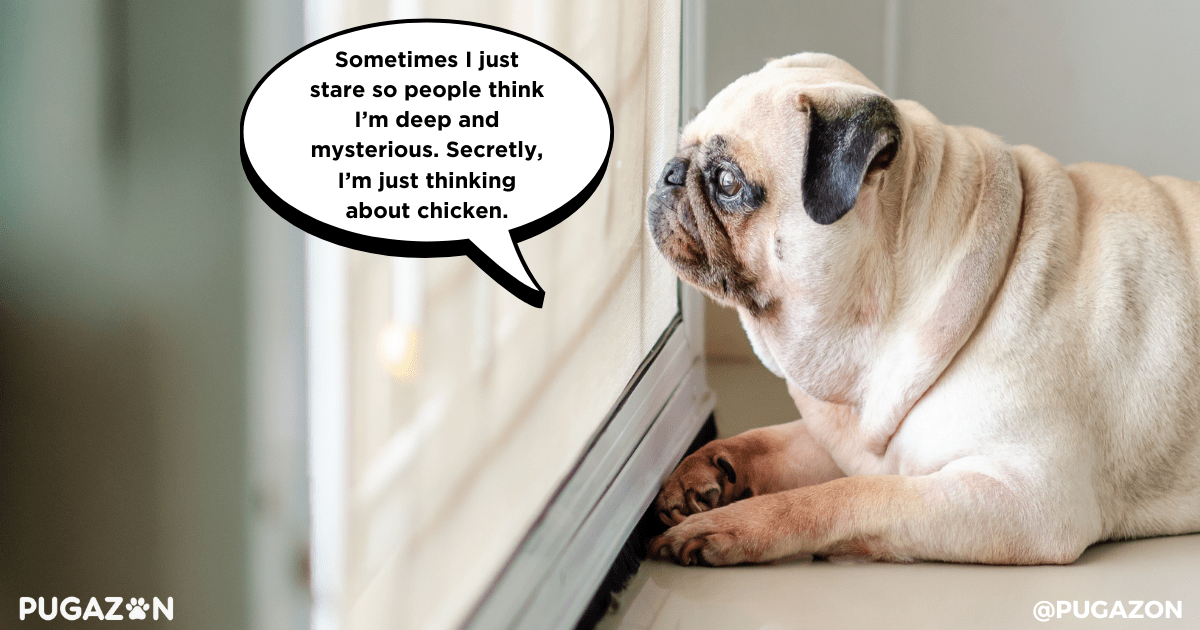
Pugs are known for their love of food, which can quickly lead to weight gain if their diet isn’t monitored carefully. The key to keeping your pug healthy is to provide them with a balanced diet that meets their nutritional needs without leading to obesity, which is a common issue in the breed.
Best Nutrition Practices for Pug Care
When choosing food for your pug, select a high-quality dog food that lists meat as the primary ingredient. Small-breed formulas are ideal as they are designed to meet the energy needs of pugs. Additionally, grain-free options may be helpful for pugs with allergies or food sensitivities.
Portion Control to Prevent Obesity
It’s easy to overfeed a pug, especially when they give you those pleading looks. However, it’s essential to control their portion sizes to prevent weight gain. Most adult pugs need around 25-30 calories per pound of body weight per day. Make sure to adjust the portions based on their activity level and consult with your vet for specific recommendations.
Avoid Human Foods
Human foods can be harmful to pugs, particularly those high in fat, salt, or sugar. Avoid feeding them table scraps and stick to healthy, dog-friendly treats in moderation.
Supplements to Enhance Pug Care
Consider adding supplements like Omega-3 fatty acids to support their coat, skin, and joints. This is particularly important for older pugs or those prone to skin conditions.
Regular Exercise for Pugs

Exercise is essential for keeping pugs healthy and preventing obesity, but it’s important to take into account their flat-faced anatomy. Pugs can struggle with overheating and breathing difficulties, so their exercise routine should be carefully managed.
Exercise Routines for Effective Pug Care
Instead of long, strenuous walks, opt for short, frequent walks throughout the day. This allows your pug to stay active without overexerting themselves. Early mornings and late evenings are ideal times for walks to avoid the hottest parts of the day.
Indoor Activities for Pug Fitness
For pugs with breathing difficulties or during hot weather, indoor playtime is a great alternative. Interactive toys and fetch games inside the house can help keep your pug engaged and active without exposing them to extreme temperatures.
Low-Impact Exercises like Swimming
Swimming is a low-impact exercise that can be beneficial for pugs, especially older ones or those with joint issues. However, always supervise them closely, as pugs are not natural swimmers and can tire quickly in the water.
Grooming and Bathing Tips
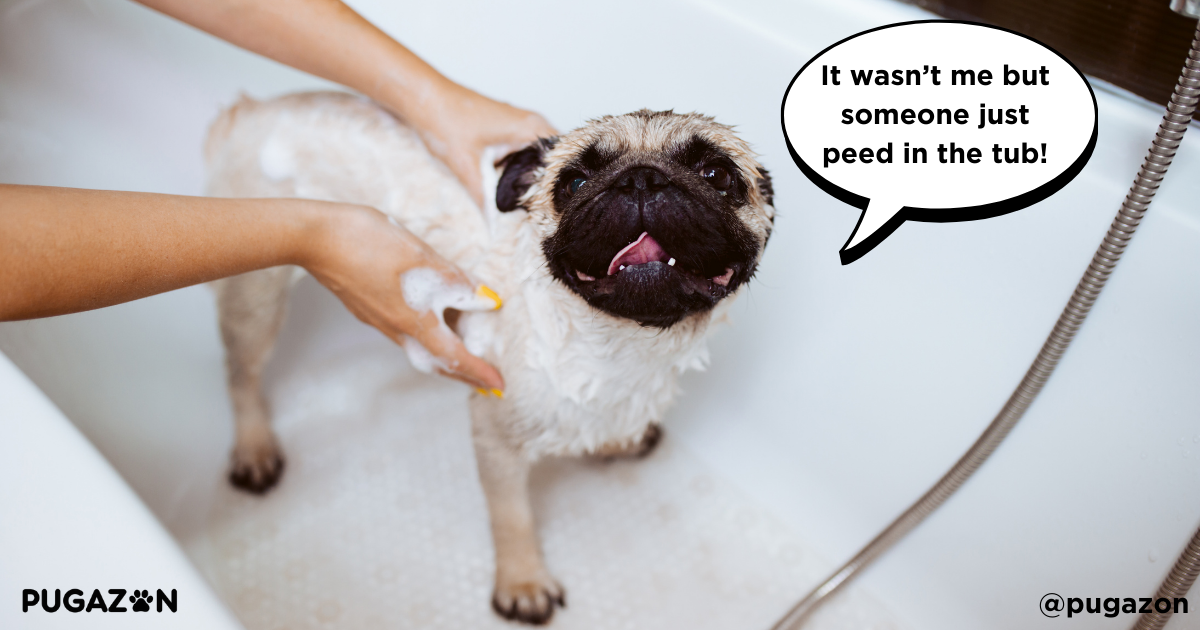
Pugs have short coats, but they shed a lot. Additionally, their wrinkled skin can trap moisture and dirt, leading to infections if not properly cleaned. Regular grooming and bathing are crucial to keeping your pug healthy and comfortable.
Techniques to Reduce Shedding in Pug Care
Although pugs have short hair, they are notorious shedders. Brushing your pug 2-3 times a week with a de-shedding tool or grooming mitt will help reduce shedding and keep their coat healthy. Regular brushing also helps distribute natural oils throughout their skin and coat, keeping it shiny and moisturized.
Bathing Routine for Pug Skin Health
Pugs should be bathed every 3-4 weeks with a gentle, hypoallergenic shampoo to keep their skin and coat clean. Pay special attention to their skin folds, as these areas are prone to infections if dirt and moisture get trapped. After bathing, make sure to dry their folds thoroughly.
Cleaning Skin Folds in Pug Care
To prevent infections in your pug’s skin folds, use a clean, damp cloth to gently wipe the areas around their face, nose, and body folds. After cleaning, make sure the folds are completely dry to prevent bacterial growth. You may also consider using a vet-recommended skin fold cleaner for added protection.
Last update on 2025-02-12 / * Affiliate links / Image source: Amazon Product Advertising API
Dental Care for Pugs
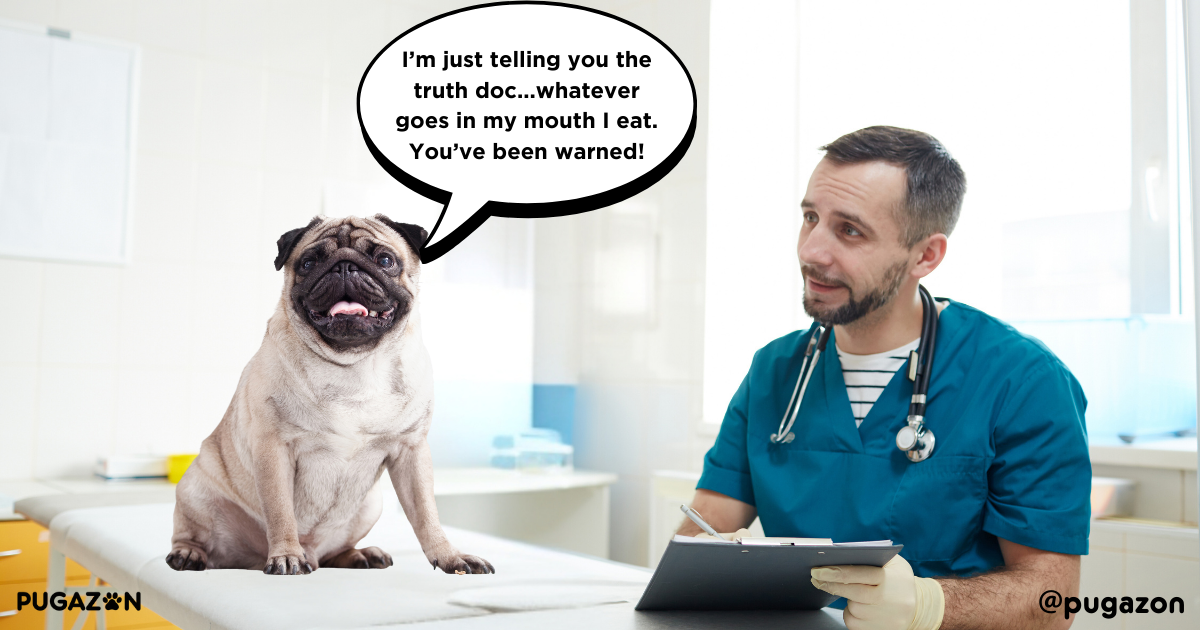
Pugs are prone to dental problems, which can lead to more serious health issues if left untreated. Keeping up with their dental hygiene is essential for preventing plaque buildup, tooth decay, and gum disease.
Preventing Gum Disease in Pug Care
Brushing your pug’s teeth regularly (ideally 3-4 times a week) is one of the best ways to maintain their dental health. Use a dog-friendly toothpaste and a soft-bristled toothbrush. Start slowly if your pug isn’t used to brushing, and make the experience positive by offering a treat afterward.
Dental Chews for Pugs
Dental chews are another great way to keep your pug’s teeth clean between brushings. These chews help scrape away plaque and tartar while keeping their breath fresh. Choose chews that are approved by your vet and safe for small dogs.
Vet Dental Cleanings for Pug Care
In addition to at-home care, schedule an annual professional dental cleaning with your vet. This will allow for a deeper cleaning, particularly below the gum line, where plaque and tartar buildup can lead to infections if left unchecked.
Always Stay Up to Date
Proper Hydration

Keeping your pug well-hydrated is crucial for maintaining their health, especially since they are prone to overheating due to their brachycephalic (flat-faced) structure. Ensuring that your pug drinks enough water throughout the day is essential to avoid dehydration, especially during the warmer months.
Daily Water Intake
A typical pug needs approximately one ounce of water per pound of body weight daily. Ensure that your pug has access to fresh, clean water at all times. If your pug is particularly active or if the weather is hot, they may require more water.
Hydration Tips
- Water Fountains: Dogs tend to drink more from moving water sources. Installing a pet-friendly water fountain can encourage your pug to stay hydrated, especially if they tend to be a bit picky about drinking.
- Portable Water Bottles: If you’re taking your pug on walks or trips, always carry a portable water bottle with a built-in bowl. Regular hydration breaks during outdoor activities are essential to prevent overheating.
- Wet Food: Incorporating wet food into your pug’s diet can also help increase their water intake, especially if they don’t drink much on their own.
Signs of Dehydration
Monitor your pug for signs of dehydration, which include excessive panting, lethargy, dry gums, sunken eyes, and loss of skin elasticity. If your pug is showing any of these signs, offer them water immediately, and contact your vet if symptoms persist.
Mental Stimulation and Enrichment
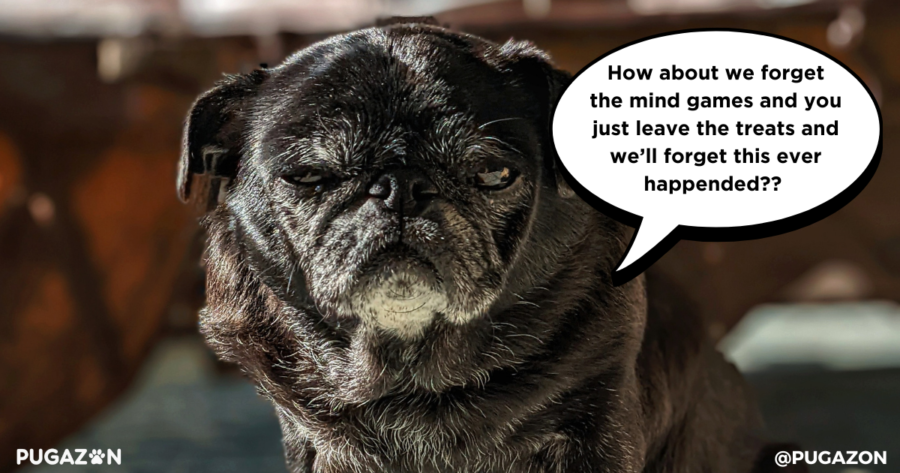
Pugs are smart, curious, and often need more than just physical exercise to keep them content. Mental stimulation is a key component of keeping your pug happy and well-behaved. Without adequate mental engagement, pugs can develop boredom-related behaviors such as chewing on furniture or excessive barking.
Puzzle Toys for Pug Engagement
Invest in interactive toys, such as treat-dispensing puzzles, to challenge your pug’s mind. These toys engage their problem-solving skills and keep them occupied, especially when you’re busy or not home. Puzzle feeders are another great option that combines mental stimulation with feeding time.
Training as Playtime for Pug Care
Training sessions can be fun and stimulating for your pug. Teaching them new tricks or commands, such as “find it” or “touch,” not only strengthens your bond but also keeps their minds sharp. Use positive reinforcement with small treats or praise to make these sessions enjoyable.
Activities to Enhance Pug Mental Health
Games like hide-and-seek (where you hide treats around the house) are great for providing mental stimulation. You can also rotate toys every few days to keep things fresh and exciting. Indoor play during hot or cold weather is a great way to keep your pug engaged without physical strain.
Monitoring and Managing Pug Weight
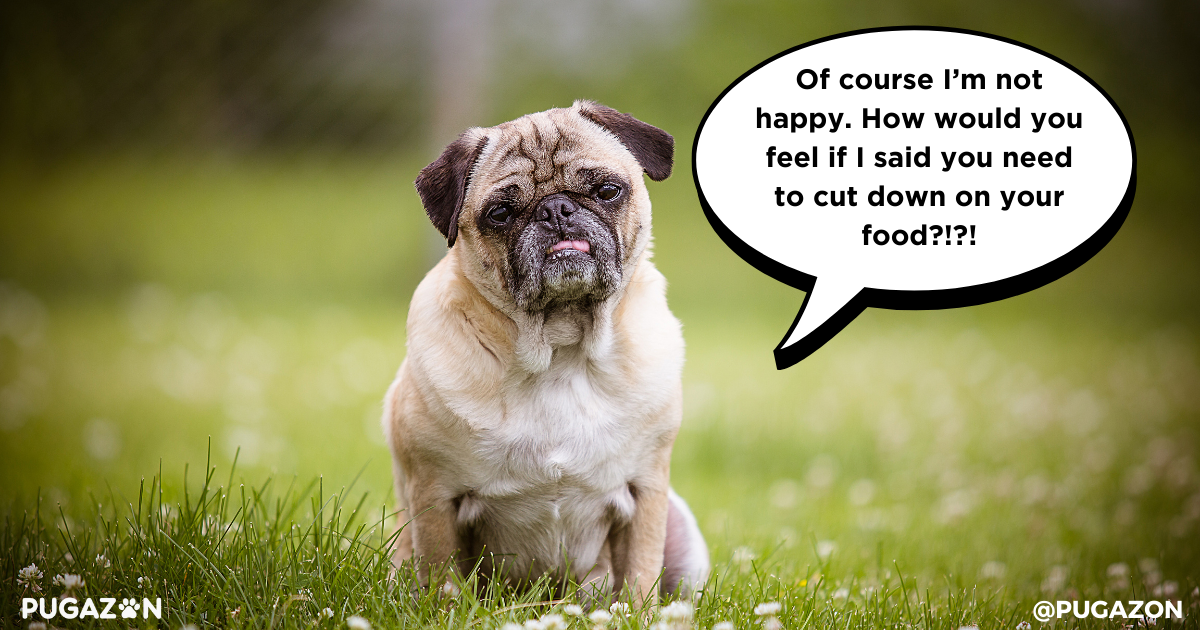
Maintaining a healthy weight is critical for pugs, as they are prone to obesity, which can lead to a host of health issues such as joint problems, breathing difficulties, and even heart disease. Monitoring your pug’s weight helps to ensure that they stay within a healthy range, preventing these complications.
Weight Management Tips for Pug Care
You should weigh your pug regularly, especially if you’re trying to manage their weight. Most adult pugs weigh between 14 and 18 pounds, depending on their size. Check with your vet to determine the ideal weight for your pug and aim to keep them within that range.
Healthy Feeding Practices for Pug Health
Overfeeding is one of the most common causes of obesity in pugs. Follow feeding guidelines based on your pug’s weight and activity level, and avoid giving too many treats or table scraps. A well-balanced diet, in the right portion size, is key to keeping their weight in check.
Signs Your Pug Might Be Overweight
- Lack of a visible waistline when viewed from above
- Difficulty breathing or excessive panting during light activity
- Reluctance to walk or play
- Lethargy and lower energy levels
Regular vet visits are important to monitor your pug’s weight and ensure they’re staying healthy. If necessary, your vet can suggest a weight-loss plan to help your pug shed excess pounds safely.
Pug-Proofing Your Home
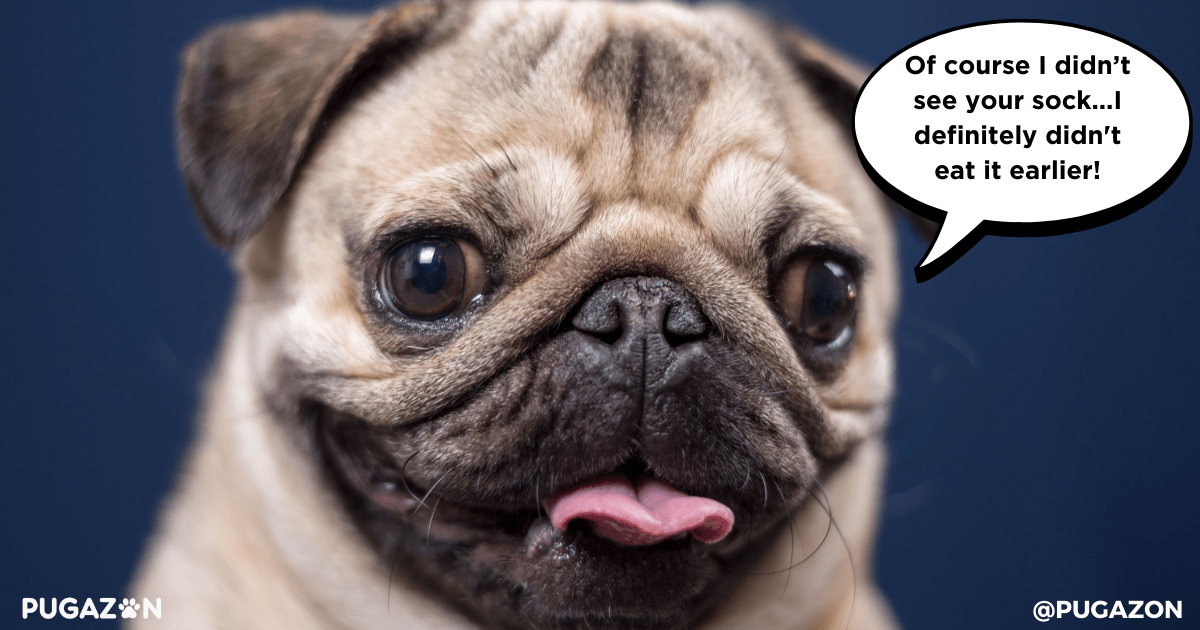
Pugs are curious and often get into things they shouldn’t. Pug-proofing your home ensures that they stay safe and away from harmful objects or substances. Creating a secure environment helps prevent accidents and keeps your pug comfortable.
Remove Dangerous Objects
Just like baby-proofing, pug-proofing your home means removing anything that could be harmful to your pug. Items such as electrical cords, small objects that could be swallowed, and cleaning products should be kept out of reach.
Create Safe Pug Spaces
Set up designated safe spaces for your pug to relax. These could be areas of the home that are free of hazards where your pug can rest without getting into trouble. Baby gates can help block off areas where you don’t want your pug to go, such as the kitchen or stairs.
Check for Toxic Plants
Some houseplants are toxic to dogs. Make sure to remove any plants that could pose a risk to your pug. Plants such as lilies, aloe vera, and sago palms should be kept away or replaced with pet-friendly alternatives.
Pug-Friendly Floors
Pugs’ paws can sometimes be sensitive to certain surfaces. Slippery floors can also pose a risk of injury, especially for older pugs. Consider adding rugs or mats in areas where they frequently walk to provide traction and comfort.
Pug-Specific Veterinary Care

Pugs have unique health needs, and because of their specific breed characteristics, they require specialized veterinary care to stay healthy. Regular vet visits are essential for monitoring common pug-related health issues, including respiratory problems, eye conditions, and joint concerns.
Annual Check-Ups
A yearly comprehensive check-up is critical for monitoring your pug’s overall health. Due to their brachycephalic structure, pugs often develop breathing issues, such as brachycephalic obstructive airway syndrome (BOAS). Regular vet visits ensure that these conditions are monitored and managed before they become severe.
Specialized Tests
Your vet might recommend additional tests based on your pug’s age or specific health needs. These can include:
- Respiratory evaluations for breathing difficulties
- Eye exams to check for cataracts, corneal ulcers, or other issues common in pugs
- Orthopedic exams to detect early signs of arthritis or hip dysplasia, which are common in overweight pugs
Vaccinations and Parasite Control
Pugs, like all dogs, need to stay up to date on vaccinations. Vaccinations help protect your pug from contagious diseases like parvovirus, distemper, and rabies. Parasite prevention (for fleas, ticks, and heartworm) should also be discussed with your vet to keep your pug protected year-round.
Choosing a Pug-Savvy Vet
It’s helpful to choose a veterinarian who has experience with brachycephalic breeds, as they can provide more tailored advice and care based on your pug’s specific needs.
Handling Pug Shedding

Pugs are known for their shedding, which can be a challenge for owners. Despite their short coats, they tend to shed year-round. Proper grooming and dietary support are key to managing the shedding and keeping your home fur-free.
Regular Brushing
Brushing your pug at least two to three times a week will help control shedding and promote healthy skin. Use a de-shedding tool or rubber grooming mitt to remove loose hairs and stimulate circulation. Brushing also helps distribute natural oils in their skin, keeping their coat shiny and healthy.
Healthy Diet and Supplements
A healthy diet can reduce excessive shedding. Ensure your pug’s food contains Omega-3 and Omega-6 fatty acids, which are essential for skin and coat health. If necessary, your vet may recommend additional supplements, such as fish oil, to further improve their coat.
Bathing and Skin Care
Regular baths (every 3-4 weeks) with a gentle dog shampoo can also help reduce shedding by removing loose hair and dead skin. Focus on cleaning and drying their skin folds thoroughly to prevent infections and irritation, which can exacerbate shedding.
Home Maintenance
To keep your home as fur-free as possible, vacuum regularly and use lint rollers on furniture and clothing. Investing in air purifiers can also help reduce pet dander in the air, especially if anyone in your household has allergies.
Preventing Overheating

Pugs are more prone to overheating than many other breeds because of their flat faces, which make it harder for them to cool down through panting. Overheating can lead to heatstroke, a potentially life-threatening condition, so taking extra care during warmer months is crucial.
Recognizing the Signs of Overheating
It’s essential to know the signs of overheating in your pug so you can act quickly if they’re at risk. Symptoms include:
- Excessive panting
- Lethargy or weakness
- Drooling
- Rapid heartbeat
- Vomiting or diarrhea
If you notice any of these signs, move your pug to a cooler area immediately, offer them water, and contact your vet if their condition doesn’t improve.
Avoiding High Temperatures
Avoid walking your pug during the hottest parts of the day, typically between 10 a.m. and 4 p.m. Instead, opt for early morning or late evening walks when the temperature is cooler. Always provide plenty of fresh water, and ensure your pug has access to shade if they’re outside.
Cooling Products
Consider investing in cooling products designed specifically for dogs, such as cooling vests, bandanas, or mats. These can help regulate your pug’s body temperature on particularly hot days. At home, you can place fans or air conditioning near your pug’s resting area to keep them cool and comfortable.
Hydration and Water Play
Keep your pug hydrated by offering water frequently, especially during walks or outdoor playtime. In the summer, some pugs enjoy playing in shallow water, which can help cool them down while giving them some gentle exercise. Always supervise water activities to ensure your pug stays safe.
Regular Vet Checkups
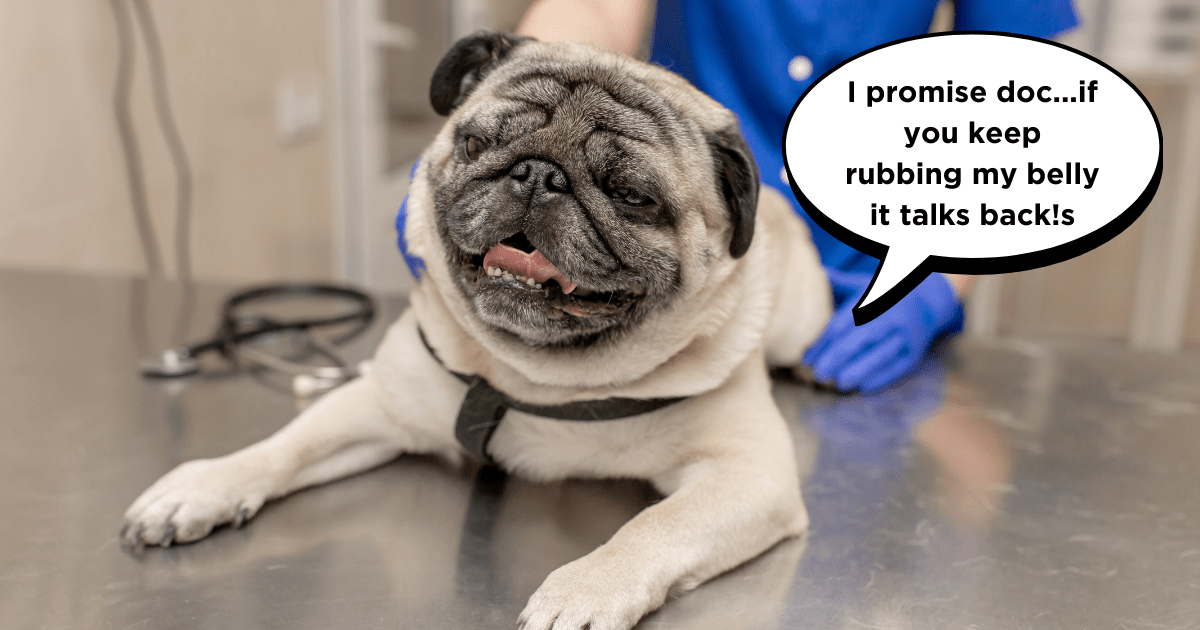
When it comes to your pug’s health, regular vet checkups are non-negotiable. These little companions may have a tendency to hide their discomfort behind their lovable charm, so it’s important to catch potential problems before they turn serious.
Annual Checkups
Pugs, with their brachycephalic faces and other breed-specific quirks, should ideally have annual or even bi-annual checkups, especially as they get older. Vets will monitor your pug’s weight, heart health, and respiratory function—all areas prone to problems in pugs.
- Blood Tests: Routine blood work will help identify any issues with organ function (because your pug might try to convince you that extra bacon is fine, but their liver disagrees).
- Eye Exams: Pugs are prone to eye problems like cataracts and dry eye, so regular eye exams help prevent minor issues from escalating.
- Dental Exams: A yearly dental checkup ensures that your pug’s charming smile stays as fresh as possible. Remember, good dental health is essential for overall health.
Humor Element: “Your pug might not like vet visits, but bribing them with treats afterward always helps them forgive you!”
Age-Specific Care
Senior pugs (generally over 7 years old) should visit the vet more frequently—think every six months. Aging pugs often develop arthritis, heart issues, or dental problems, all of which are manageable if caught early.
Preventive Measures
Ensure your vet keeps up with vaccinations, flea treatments, and worming medication to keep your pug safe from parasites. The little things can prevent big problems!
Caring for Pug Eyes and Nose
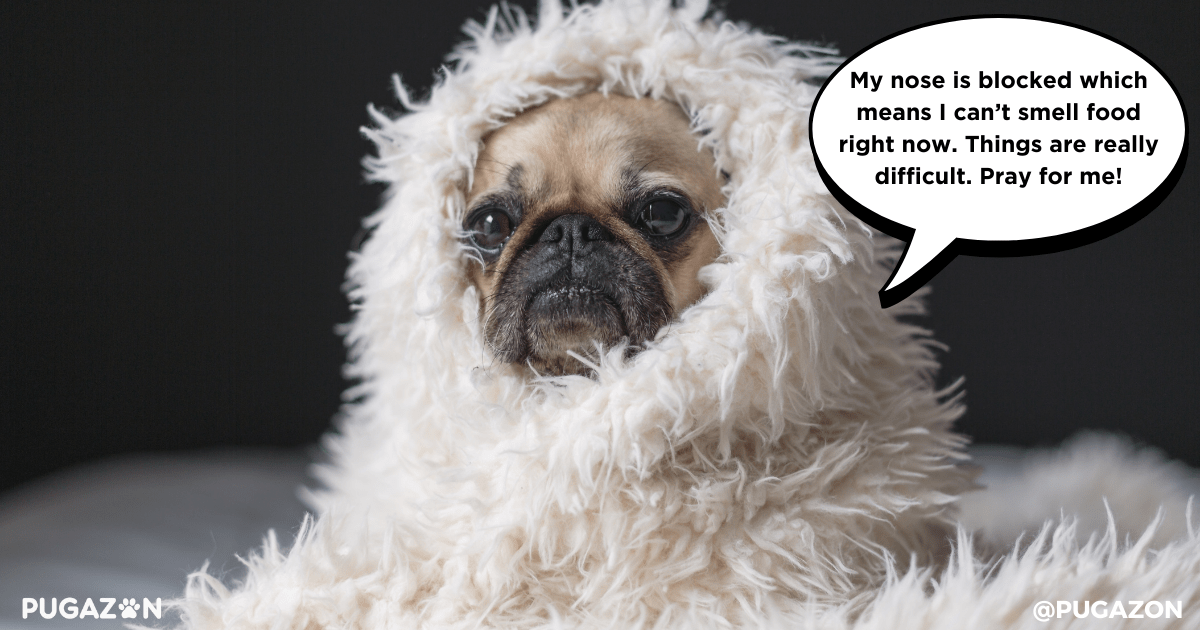
Pugs’ iconic bulging eyes and adorable noses aren’t just for show—they also need extra care. Pugs are prone to eye injuries and skin issues around their noses, so proper grooming and attention to these areas are critical.
Eye Care for Pugs
With their prominent eyes, pugs are at risk of corneal ulcers, dry eye, and infections. You’ll want to keep an eye (pun intended) on any signs of discomfort.
- Check for Redness: Look out for redness, discharge, or squinting—all signs that your pug might be dealing with eye discomfort.
- Daily Wipe Down: Use a damp cloth to gently wipe your pug’s eyes daily to clear away any dust or debris that might cause irritation.
Humor Element: “Your pug’s big eyes might make them look like they’re always surprised, but keep them clean and healthy to avoid real surprises!”
Nose and Skin Fold Care
The deep skin folds around your pug’s face and nose can trap moisture, dirt, and bacteria, leading to infections. Regular cleaning is essential to avoid irritation.
- Clean the Folds: Gently clean the folds with a soft cloth and hypoallergenic wipes. Dry the folds afterward to prevent moisture buildup.
- Nose Care: Apply a pet-safe balm to their nose to keep it moisturized and prevent cracking, especially during dry months.
Maintaining Healthy Skin Folds

One of the most endearing features of a pug is their wrinkled face, but those adorable skin folds can become breeding grounds for bacteria if not properly cared for.
Routine Skin Fold Cleaning
Regularly cleaning your pug’s skin folds is vital to avoid irritation and infection. Dirt, moisture, and even food particles can get trapped in those cute wrinkles, causing issues.
- Daily Cleaning: Use a damp cloth or unscented baby wipe to clean the folds gently every day. Be sure to dry them thoroughly afterward.
- Preventing Infections: Keeping the folds dry is the best way to prevent skin infections. You can use a vet-approved powder to absorb excess moisture, especially after walks or playtime.
Humor Element: “Those adorable wrinkles might make your pug look like a wise philosopher, but they need some serious maintenance to keep things clean and comfy!”
Watch for Irritation
Keep an eye out for any signs of redness, itching, or a foul smell coming from the folds—these are signs of a possible infection and should be checked by a vet.
Socialization and Interaction
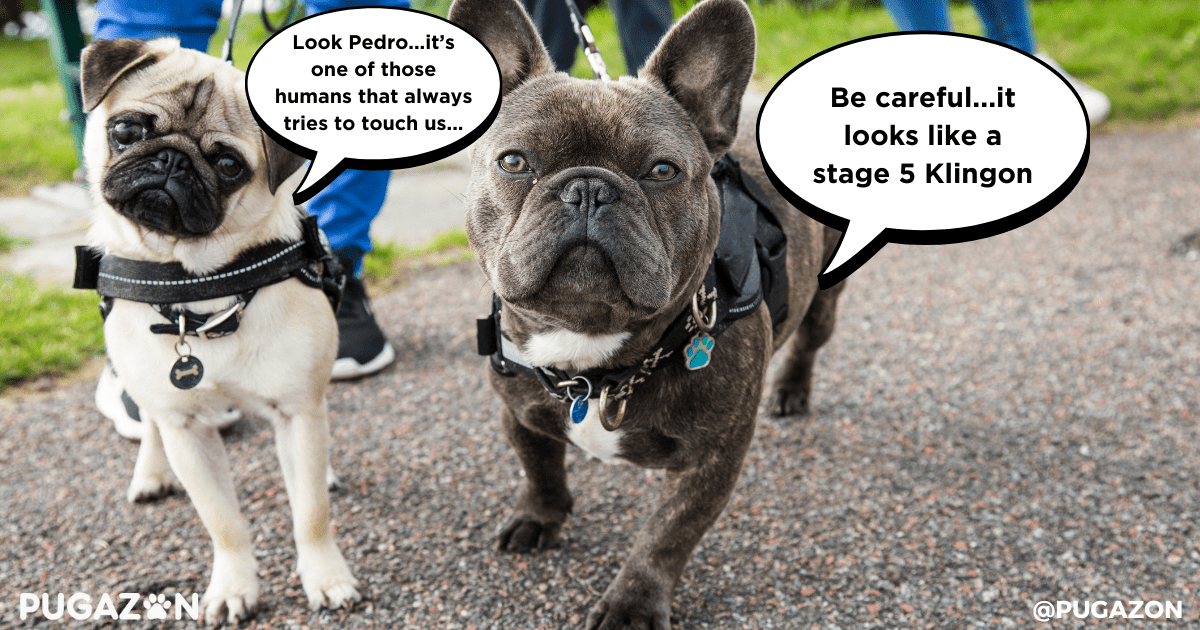
Pugs are naturally sociable dogs that thrive on interaction with people and other pets. Ensuring they get plenty of socialization and positive engagement is essential for their mental well-being.
Introduce Your Pug to New Environments
Pugs are generally adaptable, but like all dogs, they benefit from early socialization. Take your pug to different places, introduce them to new people, and let them interact with other dogs in a controlled environment.
- Dog Parks and Playdates: Pugs enjoy meeting other dogs, especially at the dog park or pug meetups. Just make sure they don’t overexert themselves, as they tend to tire out quickly.
- Controlled Socialization: Monitor your pug’s body language during interactions. If they seem uncomfortable, give them space to avoid overwhelming them.
- Play and Bonding Time: Spend quality time with your pug each day. Whether it’s playing fetch, practicing training commands, or just snuggling on the couch, your pug will thrive on your attention.
Pugs are basically social butterflies—just with shorter legs and more snorting!
Handling Separation Anxiety
Pugs are incredibly affectionate and can form strong bonds with their owners. Unfortunately, this also makes them prone to separation anxiety, especially when left alone for long periods. Managing this anxiety is crucial for your pug’s emotional well-being and your sanity!
Gradual Alone Time Training
To help reduce separation anxiety, train your pug to be comfortable with being alone for short periods. Start by leaving them alone for just a few minutes and gradually increase the time.
- Desensitization: Make your departures low-key. Avoid giving a big fuss when leaving or returning, as this can increase anxiety. Instead, calmly leave and return without too much fanfare.
- Interactive Toys: Provide puzzle toys or food-dispensing toys while you’re away. These keep your pug mentally engaged and distracted from your absence.
“Your pug might act like the world’s ending every time you leave the house, but a little training can show them you’ll always come back for belly rubs.”
Create a Safe, Comfortable Space
Create a designated, comfortable area for your pug to relax while you’re gone. Crate training can be helpful if done properly, as it provides a safe and cozy environment for your pug to retreat to when anxious.
- Soothing Scents and Sounds: Leave a piece of clothing that smells like you in their space or play soft music to help keep them calm.
Training for Behavior and Commands

Training your pug is a rewarding experience that benefits both you and your dog. Pugs are known for their eagerness to please, making them great candidates for positive reinforcement training.
Basic Commands
Start with essential commands such as sit, stay, come, and heel. These commands not only help with managing your pug’s behavior but also create a stronger bond between you and your pet.
- Positive Reinforcement: Use treats, praise, and play as rewards when your pug successfully follows a command. Pugs respond well to encouragement, and training sessions can be fun for them.
- Short Training Sessions: Keep training sessions short and enjoyable. Pugs have short attention spans, so aim for 5-10 minute sessions, multiple times a day.
Advanced Tricks and Bonding
Once your pug masters basic commands, you can teach them fun tricks like “high five,” “roll over,” or even how to fetch specific items. Training is not only good for behavior but also provides mental stimulation.
“Pugs might give you that ‘What do you mean, sit?’ look, but with the right motivation (aka treats), they’ll be showing off their skills in no time!”
Providing a Safe and Comfortable Space
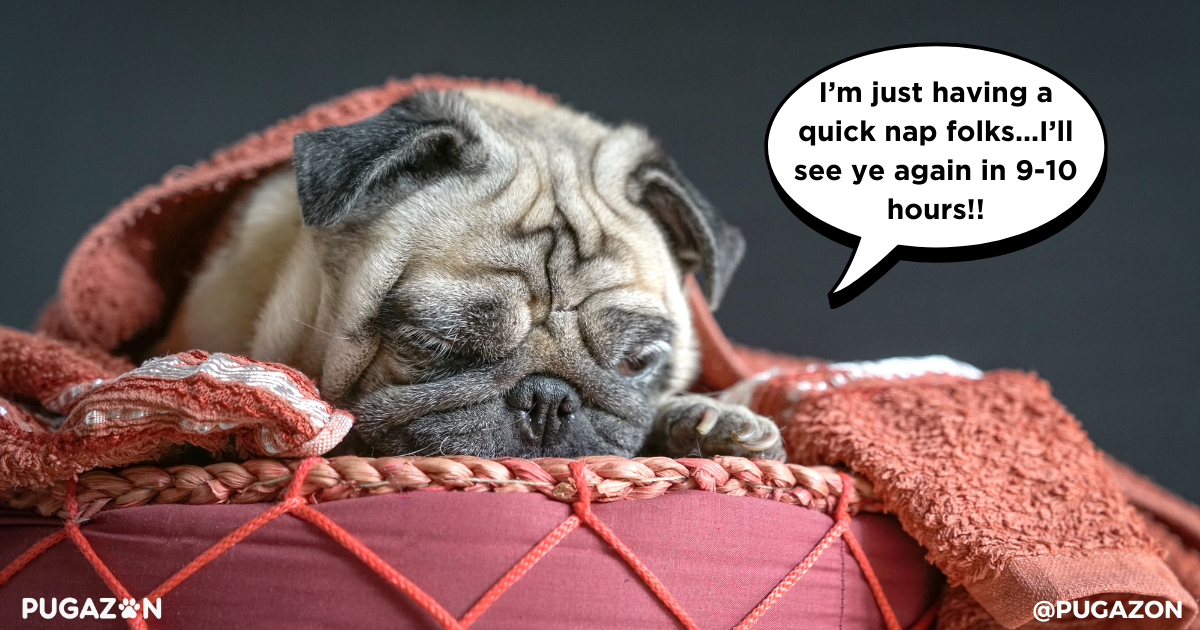
Your pug needs a safe and cozy space where they can rest and relax. Having a dedicated area can help them feel secure, especially during stressful situations like thunderstorms or when guests visit. Making them feel at home at all times will benefit your pug care strategy.
Choosing the Right Bed
Invest in a comfortable, orthopedic dog bed, especially if your pug is older or has joint problems. Orthopedic beds provide the support pugs need for their joints, particularly when they spend a lot of time lounging.
- Memory Foam Beds: For pugs with arthritis or mobility issues, memory foam beds offer extra comfort and reduce pressure on their joints.
- Elevated Beds: An elevated bed keeps your pug cool and provides airflow, which is especially important for their brachycephalic respiratory system.
Calm, Quiet Environment
Set up their bed in a quiet, low-traffic area of your home. Pugs enjoy being around their family, but they also need a peaceful place to retreat to when they need rest.
“Your pug’s version of ‘Netflix and chill’ is a comfy bed and a quiet room—no barking allowed!”
Holistic and Natural Remedies for Common Issues

Many pug owners opt for natural and holistic remedies to manage their pug care and common health issues. These remedies can complement traditional treatments and provide relief for skin issues, anxiety, and more.
Coconut Oil for Skin Health
Coconut oil is a popular remedy for treating dry, flaky skin. It can be applied topically to soothe irritated areas or even added to their diet for overall skin health benefits. Coconut oil has antimicrobial properties that help reduce infections in sensitive areas like skin folds.
- Application: Apply a small amount of coconut oil directly to irritated skin areas, especially in folds. Be cautious not to overdo it, as excess oil can cause buildup.
Oatmeal Baths for Itchy Skin
If your pug suffers from allergies or sensitive skin, an oatmeal bath can offer soothing relief from itching. Oatmeal’s anti-inflammatory properties help calm irritated skin and reduce discomfort.
- DIY Oatmeal Bath: Grind plain oatmeal into a fine powder and mix it into your pug’s bathwater. Let your pug soak for 10-15 minutes before rinsing thoroughly.
Chamomile for Anxiety
Chamomile has natural calming effects and can be used to help relax an anxious pug. Whether it’s separation anxiety, thunderstorms, or vet visits, a chamomile supplement or tea can be soothing.
- Chamomile Tea: Brew chamomile tea and let it cool before offering it to your pug. You can also find chamomile in dog-safe supplements.
“Your pug might not be into ‘spa days,’ but an oatmeal bath could turn them into a total bath-time believer!”
Traveling with Your Pug
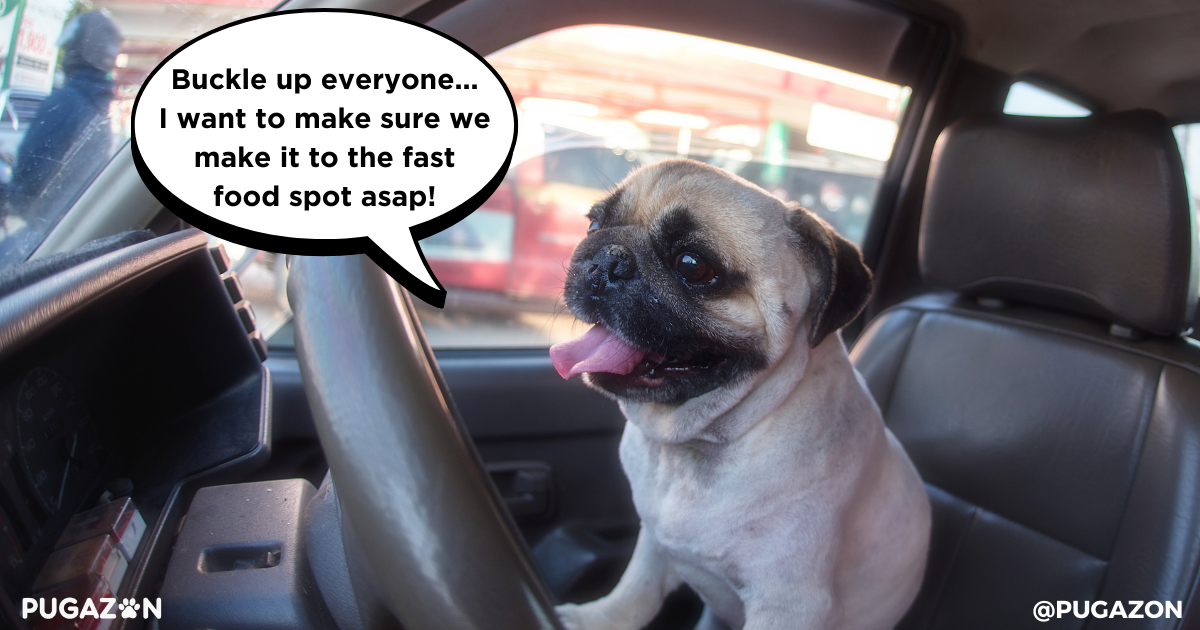
Traveling with your pug can be a fun experience, but it requires careful planning to ensure their comfort and safety. Whether you’re going on a road trip or flying, here are some key tips for traveling with your pug:
Car Travel Tips
When traveling by car, it’s essential to keep your pug safe and comfortable. Pugs are prone to motion sickness and overheating, so proper preparation is crucial.
- Safety First: Always secure your pug with a pet seatbelt or place them in a secure crate. This will prevent injury during sudden stops or accidents.
- Frequent Breaks: Plan for regular stops during long drives. Pugs need to stretch their legs, hydrate, and have bathroom breaks to stay comfortable. Make sure to bring plenty of water and a collapsible bowl for easy access.
Air Travel Tips
Flying with a pug can be challenging due to their brachycephalic nature, making air travel in the cargo hold dangerous. Always opt for in-cabin travel when possible.
- Airline Policies: Check with airlines to ensure they allow small pets in the cabin. Pugs should never travel in the cargo hold due to the risk of respiratory issues.
- Comfort in the Cabin: Bring your pug’s favorite blanket or toy to make them feel comfortable during the flight. A soft-sided carrier that fits under the seat is ideal for in-cabin travel.
FAQs About Pug Care Tips
Pugs typically need baths once every 3-4 weeks. Overbathing can dry out their skin, but regular cleaning is necessary to keep their skin folds free from dirt and bacteria. If your pug has skin issues or allergies, you might need to adjust their bathing routine according to your vet’s advice.
It depends on their health. Omega-3 fatty acids, glucosamine for joints, and probiotics for digestive health can benefit pugs, especially as they age. Always consult with your vet before adding any supplements to their diet.
Not well. Pugs are prone to overheating due to their brachycephalic (flat-faced) anatomy, which makes it harder for them to regulate body temperature. Always avoid hot, humid weather and provide plenty of water. In cold weather, they can also get chilly, so a dog sweater can help keep them warm.
A high-quality, small-breed dog food is ideal for pugs. Look for food that is rich in protein but low in fat, as pugs are prone to weight gain. Avoid feeding them table scraps, especially foods high in fat or salt, which can cause digestive issues.
Pugs need about 20-30 minutes of exercise a day, but this should be broken up into shorter sessions to avoid overexertion. They love short, frequent walks and indoor play. Just be mindful of the weather—pugs can easily overheat in warm temperatures.
Yes, pugs are generally excellent with children! Their gentle and playful nature makes them great companions for kids. However, it’s essential to supervise interactions to ensure both the pug and the child are comfortable, especially if the pug is older or has health issues.
Brushing your pug regularly—about 2-3 times a week—can help reduce shedding. Using a de-shedding tool or grooming mitt can remove loose fur and keep your pug’s coat healthy. A high-quality diet rich in Omega-3 fatty acids can also improve coat health and reduce shedding.
Pugs’ skin folds should be cleaned regularly to prevent moisture and bacteria buildup, which can lead to infections. Use a damp cloth or unscented baby wipe to gently clean the folds, then dry them thoroughly to avoid any moisture remaining in the creases.
Yes, pugs are intelligent and eager to please, making them relatively easy to train. Positive reinforcement works best—use treats, praise, and short, consistent training sessions to teach them basic commands.
Brushing your pug’s teeth 3-4 times a week is the best way to maintain their oral health. Additionally, you can give them dental chews that help reduce plaque buildup between brushings. Regular professional cleanings at the vet are also essential.


